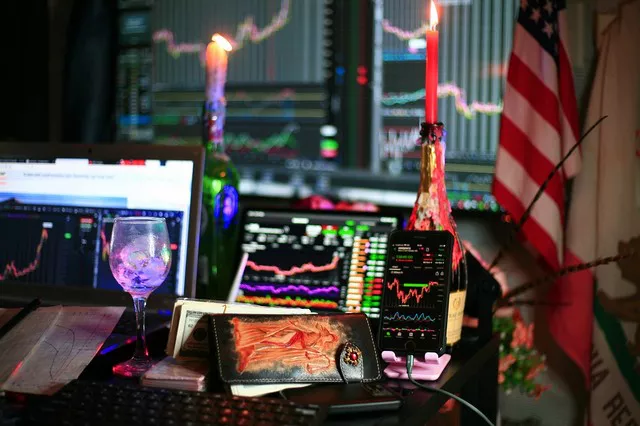In the world of finance, futures are a crucial component of trading, offering investors opportunities to speculate on the future price movements of various assets. Whether it’s commodities like gold and oil, stock market indices, or even currencies, futures provide a platform for traders to hedge risks or seek profits. Central to the futures market is the concept of ticker symbols, which serve as unique identifiers for different contracts. Understanding these symbols is essential for anyone looking to navigate the complex landscape of futures trading effectively.
What are Futures?
Futures are financial contracts that obligate the parties involved to buy or sell an asset at a predetermined price on a specified date in the future. These contracts derive their value from the underlying asset, which can range from agricultural products to financial instruments. Futures contracts are traded on exchanges, providing liquidity and standardized terms for market participants. This standardized structure allows for efficient price discovery and risk management.
Understanding Ticker Symbols
In the realm of futures trading, ticker symbols play a crucial role in identifying and tracking specific contracts. A ticker symbol is a combination of letters and sometimes numbers that uniquely identifies a particular futures contract. These symbols are used by traders, brokers, and exchanges to facilitate trading and ensure clarity in transactions.
For example, the ticker symbol for crude oil futures traded on the Chicago Mercantile Exchange (CME) is CL. This symbol is followed by additional characters to denote specific contract details, such as expiration month and year. By referencing the ticker symbol, traders can quickly identify the contract they wish to trade and access relevant market information.
Types of Futures Ticker Symbols
Futures ticker symbols typically follow a standardized format set by the exchange on which they are traded. While the specific format may vary between exchanges, there are common elements that are universally understood by traders.
One common convention is to use a combination of letters to represent the underlying asset followed by additional characters to denote contract specifications. For example, the ticker symbol for gold futures traded on the New York Mercantile Exchange (NYMEX) is GC, with additional characters used to specify contract expiration and other details.
In addition to letters, futures ticker symbols may also incorporate numbers to convey additional information. These numbers could represent factors such as contract expiration month, contract size, or other relevant parameters.
Importance of Ticker Symbols in Futures Trading
Ticker symbols are essential in futures trading for several reasons. Firstly, they provide a standardized way of identifying and referencing specific contracts across different trading platforms and exchanges. This standardization ensures consistency and clarity in communication among market participants.
Furthermore, ticker symbols enable traders to quickly assess the characteristics of a particular futures contract, such as expiration date, contract size, and trading hours. This information is crucial for making informed trading decisions and managing risk effectively.
Additionally, ticker symbols play a vital role in price discovery and market transparency. By referencing the ticker symbol, traders can access real-time market data and monitor price movements for the specific contract they are trading. This transparency enhances market efficiency and promotes fair and orderly trading.
Evolution of Ticker Symbols in Futures Markets
Over time, the format and structure of ticker symbols in futures markets have evolved to accommodate changing industry dynamics and technological advancements. As trading volumes have increased and new financial products have been introduced, exchanges have implemented enhancements to ticker symbol conventions to ensure scalability and efficiency.
One notable development is the adoption of electronic trading platforms, which have revolutionized the way futures contracts are traded. Electronic trading has facilitated faster execution and increased market access, leading exchanges to streamline ticker symbol formats to accommodate the demands of automated trading systems.
Another trend in the evolution of ticker symbols is the globalization of futures markets. With the expansion of trading activities across international borders, exchanges have sought to harmonize ticker symbol conventions to promote interoperability and facilitate cross-border trading.
Challenges and Considerations
While ticker symbols provide a convenient way of identifying futures contracts, they are not without challenges. One challenge is the potential for confusion or misunderstanding, particularly when dealing with complex contract specifications or multiple contracts with similar ticker symbols.
To mitigate this risk, exchanges and market participants must ensure clear and consistent communication regarding the interpretation of ticker symbols and contract details. Education and training initiatives can help traders navigate the intricacies of futures trading and understand how to properly interpret ticker symbols.
Additionally, technological considerations must be taken into account, particularly in the context of electronic trading. As trading platforms continue to evolve, exchanges must ensure that their systems can support the transmission and processing of ticker symbols accurately and efficiently.
Conclusion
In conclusion, futures ticker symbols are a fundamental aspect of futures trading, serving as unique identifiers for specific contracts. By understanding the conventions and nuances of ticker symbols, traders can navigate the futures market with confidence and precision. Ticker symbols provide clarity, transparency, and efficiency, enabling market participants to access vital information and execute trades with ease. As futures markets continue to evolve, ticker symbols will remain a cornerstone of trading infrastructure, facilitating the exchange of assets and the management of risk in the global financial system.


